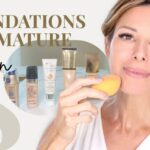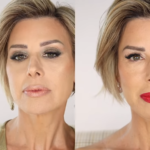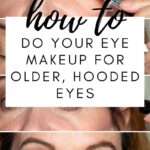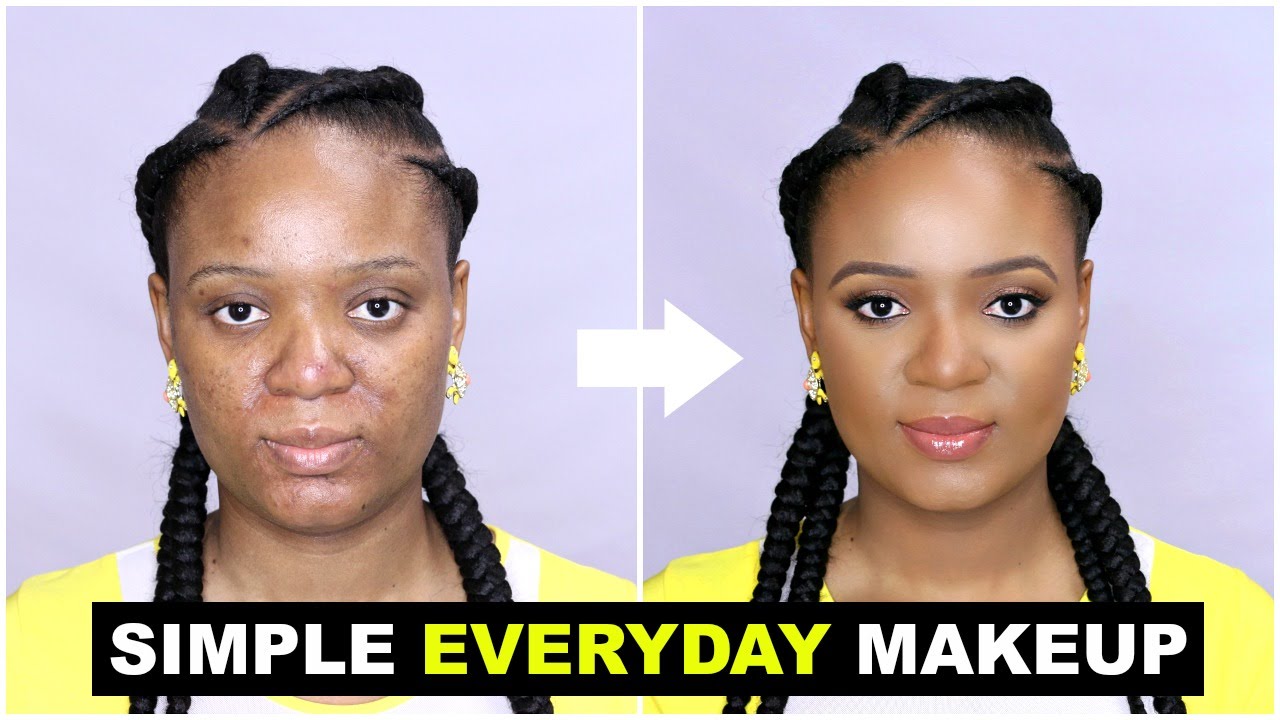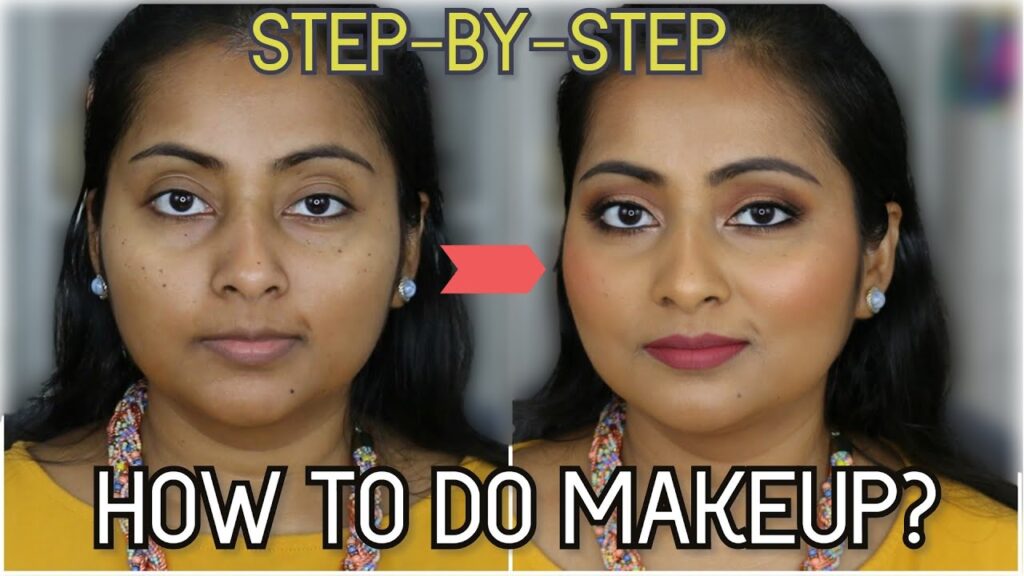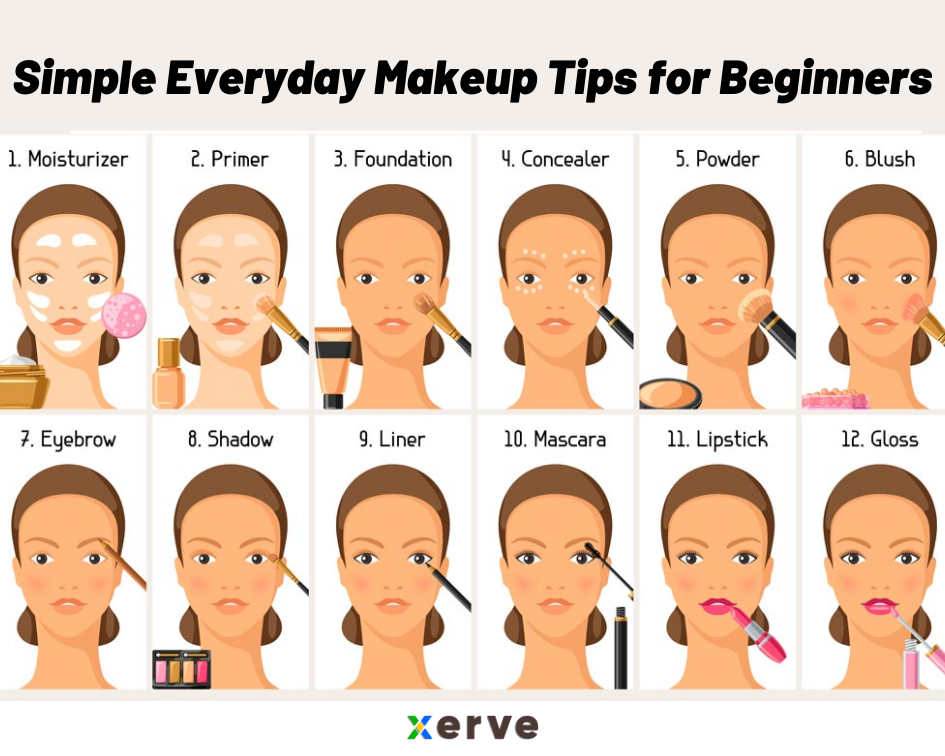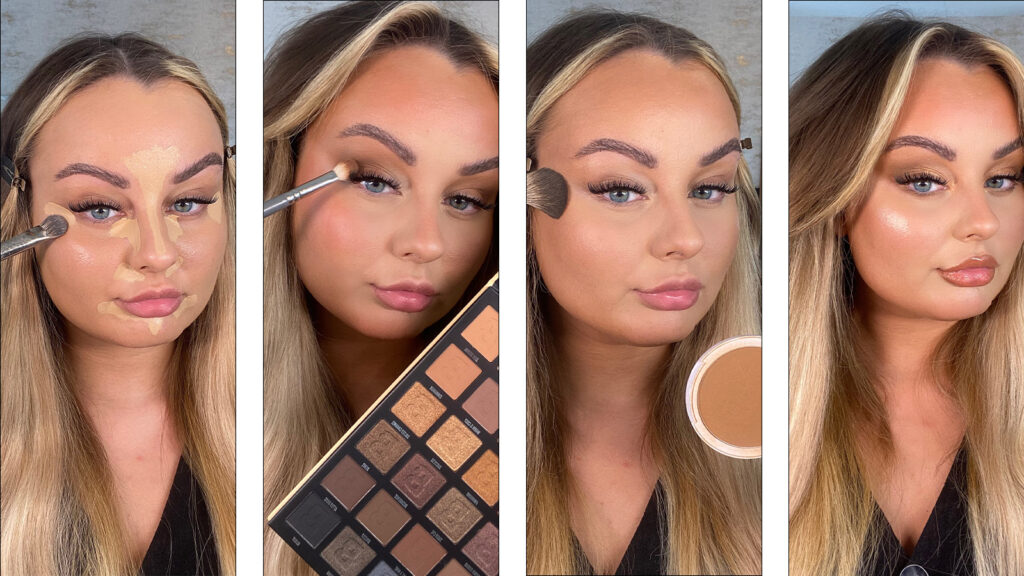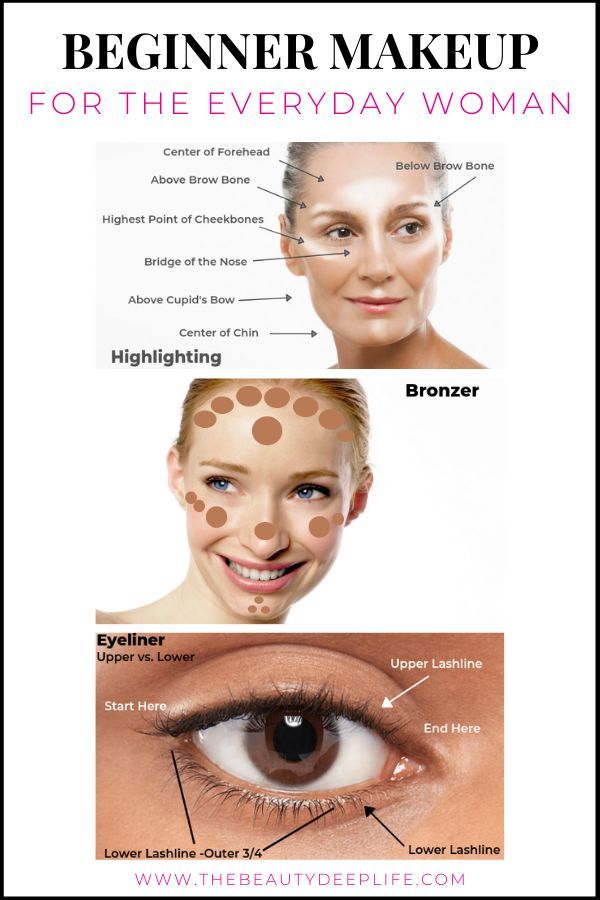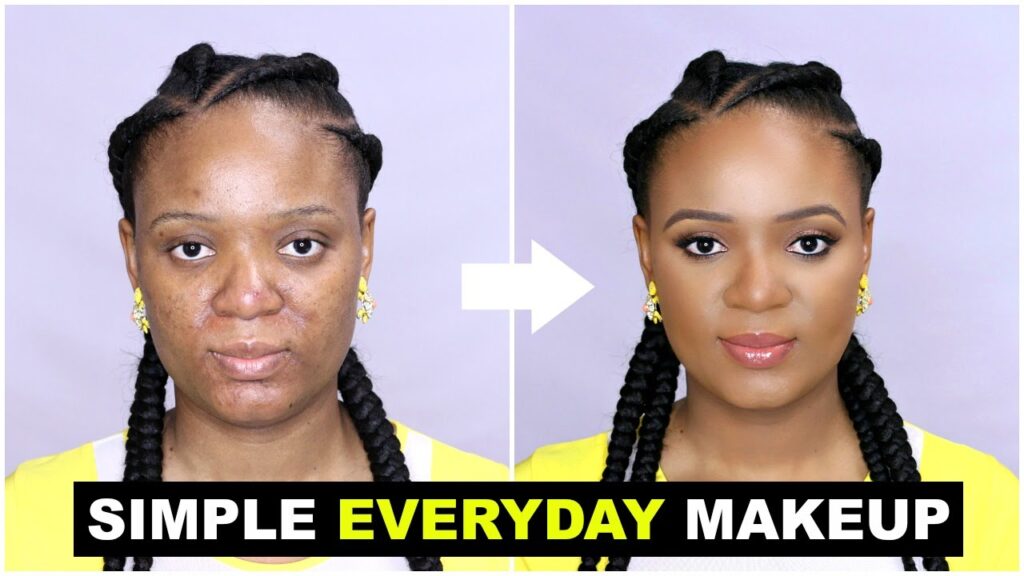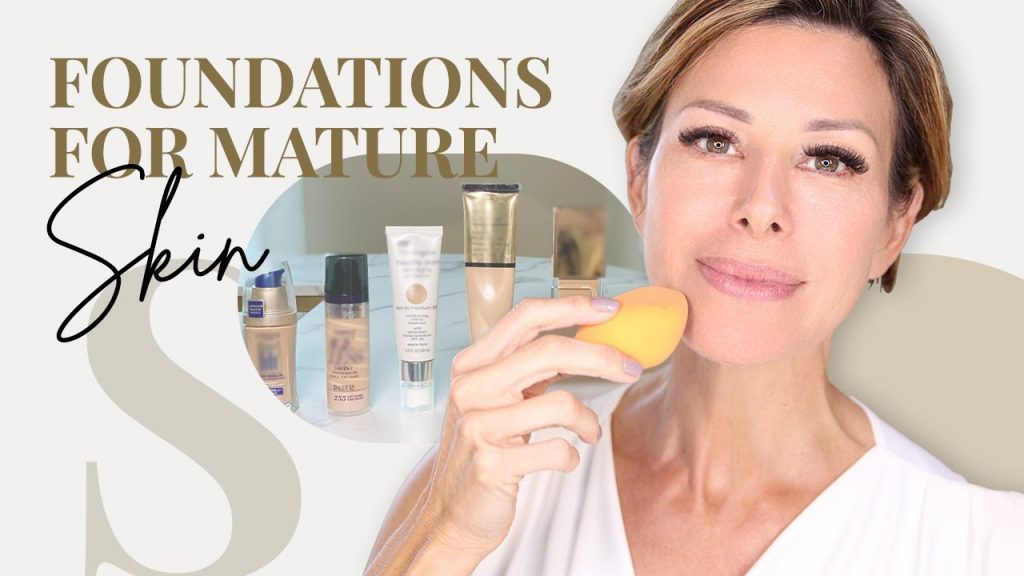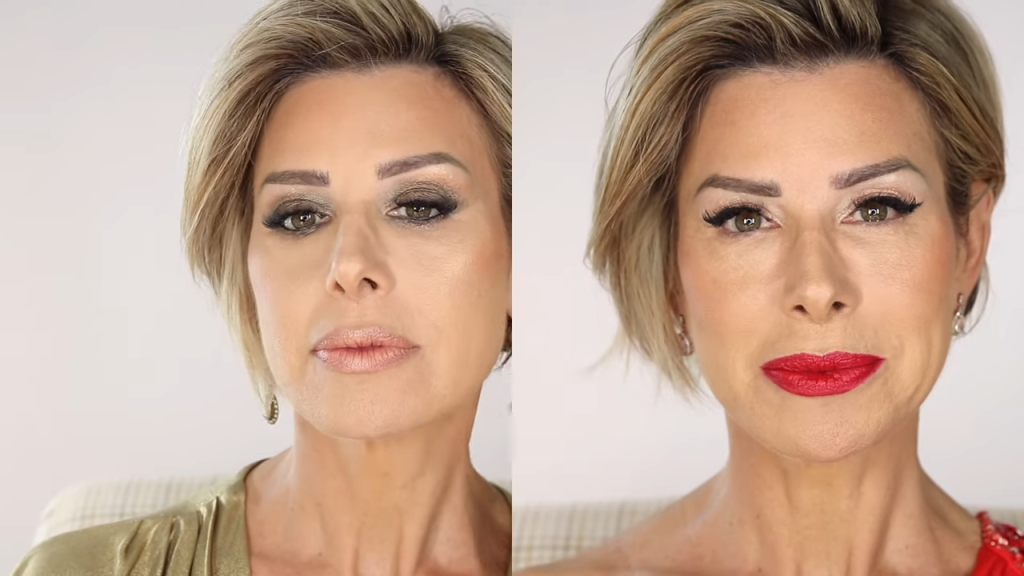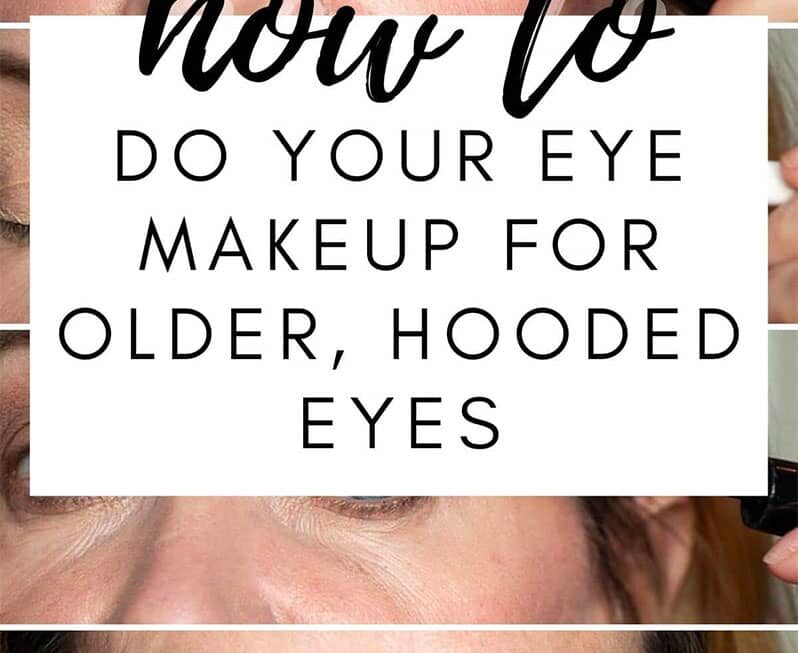If you’ve ever wanted to enhance your natural beauty with a touch of makeup but didn’t know where to start, look no further! This article will guide you through the steps of creating a basic makeup look that highlights your best features and boosts your confidence. From choosing the right foundation to accentuating your eyes and lips, you’ll learn the techniques and tips that will have you feeling like a makeup pro in no time. So dust off your makeup bag and get ready to discover the secrets of achieving a flawless, natural look – it’s easier than you think!
Prepping Your Skin
Cleansing Your Face
To achieve a flawless makeup look, it’s crucial to start with a clean canvas. Cleansing your face removes dirt, oil, and impurities, ensuring that your skin is ready for makeup application. Use a gentle cleanser that suits your skin type, whether it’s gel, foam, or cream-based. Massage the cleanser onto your face in circular motions, paying attention to areas with excess oil or makeup residue. Rinse thoroughly with lukewarm water and pat your face dry with a clean towel.
Applying Moisturizer
After cleansing, it’s essential to hydrate your skin with a moisturizer. Choose a formula that suits your skin type, such as a lightweight lotion for oily skin or a richer cream for dry skin. Massage the moisturizer onto your face and neck in upward, circular motions. This step not only nourishes your skin but also helps create a smooth base for your makeup.
Priming Your Skin
Priming your skin before applying makeup helps to extend its longevity and create a smoother surface. Choose a primer that suits your skin’s needs, such as a mattifying primer for oily skin or a hydrating primer for dry skin. Apply a small amount of primer all over your face, focusing on areas with enlarged pores or fine lines. Gently blend the primer into your skin using your fingertips or a makeup brush. Once applied, your skin will be prepped and ready for flawless makeup application.
Creating a Flawless Base
Choosing the Right Foundation
Finding the perfect foundation shade and formula is essential for creating a flawless base. Determine your skin’s undertone (cool, warm, or neutral) and select a shade that matches your complexion. Consider your skin type when choosing a formula, such as liquid, cream, powder, or cushion foundation. Test the foundation on your jawline or wrist to ensure a seamless match. Don’t be afraid to ask for assistance at a makeup counter or store to find your perfect match.
Applying Foundation
Once you’ve found your ideal foundation, it’s time to apply it to your entire face. Start by dotting the foundation onto your forehead, cheeks, nose, and chin. Use a foundation brush, sponge, or your fingertips to blend the foundation into your skin, making sure to blend it evenly and seamlessly. Pay extra attention to the areas that need more coverage, such as blemishes or redness. For a natural finish, blend the foundation down your jawline and onto your neck to avoid any visible lines.
Concealing Imperfections
To achieve a flawless complexion, concealing imperfections is key. Choose a concealer that matches your skin tone and use it to cover blemishes, dark spots, or under-eye circles. Dot the concealer directly onto the imperfections and gently blend it using your fingertips or a small concealer brush. For under-eye circles, apply concealer in an upside-down triangle shape to brighten the area. Remember to blend the edges of the concealer seamlessly into your foundation for a natural and flawless finish.
Setting with Setting Powder
To ensure your foundation and concealer stay in place throughout the day, setting them with a powder is essential. Choose a translucent or color-matched setting powder and lightly dust it all over your face using a fluffy powder brush. This step helps to control shine, minimize the appearance of pores, and increase the longevity of your makeup. Pay extra attention to areas that tend to get oily, such as the T-zone. Be careful not to apply too much powder, as it can make your makeup look heavy and cakey.
Enhancing Your Features
Defining Eyebrows
Well-groomed eyebrows frame your face and enhance your overall makeup look. Start by combing your eyebrows upward using a spoolie brush. Then, using a brow pencil or powder that matches your hair color, fill in any sparse areas or gaps in your brows. Create small, hair-like strokes to mimic natural brow hairs for a more realistic look. Finally, blend the product using a clean spoolie brush for a softer finish. If needed, set your eyebrows in place using a clear brow gel.
Applying Eyeshadow
Eyeshadow adds depth and dimension to your eyes, making them appear more vibrant and captivating. Start by applying a neutral shade all over your lid as a base. Then, choose a darker shade for the outer corner of your eyes and blend it into the crease. For added dimension, apply a shimmer or metallic shade on the center of your lid. Use a fluffy eyeshadow brush to blend the colors seamlessly for a gradient effect. Don’t forget to highlight your brow bone with a light shade to open up your eyes.
Adding Eyeliner
Eyeliner helps to define your eyes and make them appear more awake. Choose between a pencil, gel, or liquid eyeliner depending on your skill level and desired look. To apply, start at the inner corner of your eye and draw a thin line along your upper lash line, gradually thickening it as you move towards the outer corner. For a more dramatic look, extend the line slightly beyond the outer corner of your eye, creating a subtle wing. Repeat on the other eye and make sure both lines are symmetrical.
Applying Mascara
Mascara adds length, volume, and intensity to your lashes, making your eyes pop. Start by curling your lashes using an eyelash curler for an extra lift. Then, choose a mascara that suits your needs, whether you want length, volume, or both. Wiggle the mascara wand at the base of your lashes and then brush it through to the tips, making sure to coat each lash evenly. For added drama, apply a second or third coat, allowing each layer to dry in between. Avoid clumps by combing through your lashes with a clean mascara wand or a lash comb.
Contouring and Highlighting
Contouring and highlighting add dimension to your face, helping to accentuate your features. To contour, choose a matte bronzer that is a couple of shades darker than your skin tone. Apply it to the hollows of your cheeks, temples, jawline, and along the sides of your nose to create shadows and definition. Blend the contour shade thoroughly to avoid harsh lines. For highlighting, use a shimmery powder or cream product on the high points of your face, including your cheekbones, brow bone, and down the bridge of your nose. This will add a radiant glow to your complexion.
Adding Blush
Blush adds a healthy flush of color to your cheeks, giving you a youthful and fresh look. Choose a blush shade that complements your skin tone and apply it to the apples of your cheeks, blending it towards your hairline. Smile to identify the apples of your cheeks more easily. Use a blush brush or your fingertips to apply and blend the blush, ensuring a natural and seamless finish. Be careful not to apply too much blush, as it can overpower the rest of your makeup.
Applying Lipstick or Lip Gloss
Completing your makeup look with lipstick or lip gloss adds a touch of color and finishes off your overall appearance. Choose a shade that suits your complexion, whether it’s a bold red, a soft nude, or a vibrant pink. Start by outlining your lips with a lip liner that matches your chosen shade or is slightly darker. Fill in your lips with the lipstick or lip gloss, using a lip brush or directly from the tube. Blot your lips with a tissue and apply a second coat for longer-lasting color. If using a lip gloss, apply it in the center of your lips for a fuller and more dimensional effect.
Perfecting the Look
Setting Your Makeup
To ensure your makeup stays in place throughout the day and withstands any environmental factors, setting your makeup is crucial. Use a setting spray or face mist and lightly mist it over your entire face, holding it approximately six inches away. The setting spray will help to lock in your makeup, giving it a natural, long-lasting finish. Allow the setting spray to dry before moving on to the next step.
Adding Finishing Powder
Finishing powder helps to blur imperfections and give your skin a smooth, airbrushed appearance. Choose a translucent or color-correcting finishing powder that suits your skin tone and concerns. Lightly dust the powder all over your face using a fluffy brush or a powder puff. This step will help to set your makeup and minimize the appearance of fine lines and pores. Be cautious not to apply too much powder, as it can make your skin look overly matte or textured.
Setting Spray
The final step in perfecting your makeup look is to use a setting spray. Setting sprays help to lock in your makeup, making it last longer and remain in place. Hold the setting spray approximately six inches away from your face and mist it all over, ensuring even coverage. Allow the setting spray to dry completely before touching your face or applying any additional products. This step will not only make your makeup look more natural but also help it withstand the test of time.
Tips for Longevity
Primer for Longer Wear
Using a primer before applying your makeup can significantly extend its longevity. Primers create a barrier between your skin and your makeup, preventing oils and sweat from breaking down your products. Choose a primer that suits your skin type and concerns, such as mattifying or hydrating primers. Apply a small amount of primer all over your face, focusing on areas prone to oiliness or where you want your makeup to last the longest.
Using Waterproof Products
If you know you’ll be in a situation where your makeup needs to withstand water, sweat, or humidity, opt for waterproof products. Waterproof mascara, eyeliner, and even foundation can help your makeup stay in place for extended periods, even in challenging conditions. These products are designed to resist smudging or fading, ensuring your makeup looks flawless throughout the day or night.
Avoiding Touching Your Face
Throughout the day, it can be tempting to touch your face. However, this transfers oils and dirt from your hands onto your skin, potentially causing your makeup to smudge or break apart. Try to avoid touching your face, especially your T-zone, as it tends to get oilier faster. If you need to scratch an itch or wipe away sweat, use a clean tissue or blotting paper instead of your hands.
Blotting Excess Oil
If you have oily skin, it’s common for your makeup to become shiny or start to break down as the day progresses. To combat excess oil, use oil-absorbing sheets or blotting papers to gently blot away any shine. Instead of layering on more powder, which can make your makeup look cakey, blotting papers absorb the oil without disturbing your makeup. This simple step can help refresh your complexion and keep your makeup looking fresh.
Using Setting Spray
Setting sprays are not only beneficial for perfecting your makeup look but also for extending its wear time. After completing your makeup application, spritz a setting spray all over your face to lock in your products and prevent them from fading or transferring. Setting spray creates a protective barrier and can help keep your makeup intact for hours, even in hot or humid weather.
Makeup Tools and Brushes
Foundation Brush or Sponge
A foundation brush or sponge is essential for achieving a smooth and flawless application of foundation. A foundation brush allows for precise placement and blending, while a makeup sponge can create a seamless, airbrushed finish. Choose the tool that you feel most comfortable with and experiment to find the best technique for your desired coverage and finish.
Concealer Brush
A concealer brush is smaller and more precise than a foundation brush, allowing for targeted application and seamless blending of concealer. This brush is especially useful for covering blemishes, dark spots, or under-eye circles. The small, tapered bristles help to blend the concealer seamlessly into the skin, ensuring a natural and even result.
Eyeshadow Brushes
Eyeshadow brushes come in different shapes and sizes, each serving a specific purpose. A fluffy blending brush is perfect for seamlessly blending eyeshadow colors, while a flat shader brush is ideal for applying color to the lid. A smudge brush helps to create a smoky eye effect, while a precision brush allows for detailed application and precise lines. Experiment with different brushes to find the ones that work best for your desired eye look.
Eyeliner Brush
An eyeliner brush is small, thin, and angled, allowing for precise application of eyeliner products. Whether you prefer gel, cream, or powder eyeliner, using an eyeliner brush can help you achieve a sharp, defined line or a subtle and smudged effect. The angled bristles make it easier to control and create different eyeliner styles, such as cat-eye or winged liner.
Mascara Wand
A mascara wand is the tool used to apply mascara to your lashes. Most mascaras come with a built-in wand, but you can also purchase separate disposable or reusable mascara wands for more precise application or to separate any clumps. The wand’s bristles coat your lashes evenly with mascara, adding length, volume, and definition to your lashes.
Contour Brush
A contour brush is specifically designed to apply and blend contour products, such as bronzer or contour powder, to create shadows and definition on your face. The brush’s angled shape helps to precisely apply the product to the hollows of your cheeks, along the jawline, and the sides of your nose. The bristles are dense yet soft, allowing for seamless blending and a natural-looking contour.
Blush Brush
A blush brush is fluffy and soft, allowing for precise yet diffused application of blush to the cheeks. The brush’s shape and bristles help to blend the blush seamlessly into your skin, creating a natural and flushed appearance. When applying blush, start with a light hand and build up the color gradually to achieve the desired intensity.
Lip Brush
A lip brush is a small, precise brush used to apply lipstick or lip gloss to your lips. Using a lip brush allows for more control, ensuring a defined lip line and even application of color. The brush’s shape helps to apply the product precisely and evenly, resulting in a polished and professional-looking lip.
Common Mistakes to Avoid
Mismatched Foundation
One of the most common makeup mistakes is wearing a foundation that doesn’t match your skin tone. It’s essential to choose a shade that seamlessly blends with your complexion to create a natural and flawless look. Take the time to test different shades and formulas on your jawline or wrist in natural lighting to find the perfect match for your skin tone.
Overdoing Eyeshadow
While eyeshadow can enhance your eyes, it’s important not to overdo it. Applying too much eyeshadow or using too many bold colors can overwhelm your eyes and make your makeup look heavy. Stick to a maximum of three complementary shades, blend them seamlessly, and opt for lighter shades on the lid. Choose shades that enhance your eye color and take the time to blend for a soft, seamless look.
Uneven Eyeliner
Creating an even and symmetrical eyeliner application can be challenging, but it’s essential for a polished makeup look. One common mistake is having uneven lines or different thicknesses on each eye. Take your time and practice using a mirror to ensure both eyes match. Starting with a thin line and gradually building up the thickness can help achieve a balanced and precise eyeliner look.
Clumpy Mascara
Mascara can enhance your lashes, but clumpy lashes can distract from your overall makeup look. To avoid clumps, make sure to wipe off excess product from the mascara wand before applying. Wiggle the wand at the base of your lashes and move it upward to separate and coat each lash evenly. If clumps do occur, use a clean mascara wand or a lash comb to comb through and separate them for a more defined appearance.
Harsh Contouring
Contouring should enhance your natural features, not create harsh lines. One common mistake is applying contour product too heavily or using too dark of a shade, resulting in an unnatural or muddy look. When contouring, use a light hand and build up the product gradually, blending it seamlessly into your skin. Remember to choose a contour shade that is only a few shades darker than your skin tone for a more natural-looking result.
Blush Overload
While blush can add a healthy flush to your cheeks, applying too much can make your makeup look heavy or clown-like. Start with a light application and gradually build up the color to achieve the desired intensity. When applying blush, tap off any excess product from the brush and blend it seamlessly into your skin for a natural and flattering look.
Feathering Lipstick
Lipstick feathering or bleeding can occur when the color migrates into the fine lines around your lips, resulting in an uneven and messy appearance. To prevent this, start by outlining your lips with a lip liner that matches your lipstick shade. Fill in your lips with the lip liner as a base to create a barrier and improve the longevity of your lipstick. Then, apply your lipstick or lip gloss, ensuring to stay within the lip liner’s boundaries.
Skin Preparation and Care
Cleansing and Exfoliating
Cleansing and exfoliating your skin regularly is essential for maintaining a healthy and radiant complexion. Cleanse your face twice a day, morning and night, using a gentle cleanser that suits your skin type. Exfoliate once or twice a week to remove dead skin cells and reveal a smoother, brighter complexion. Be gentle when exfoliating to avoid irritating your skin, and choose a product with finely ground particles or gentle chemical exfoliants.
Moisturizing Daily
Moisturizing your skin daily is a crucial step in any skincare routine. It helps keep your skin hydrated, nourished, and protected from environmental factors. Choose a moisturizer that suits your skin type, whether it’s a lightweight lotion, a richer cream, or a gel formula. Apply moisturizer after cleansing and toning your skin, both in the morning and at night, to lock in moisture and maintain a healthy complexion.
Protecting from the Sun
Sun protection is paramount for maintaining healthy and youthful-looking skin. Apply sunscreen with at least SPF 30 or higher daily, even on cloudy days. Choose a sunscreen that offers broad-spectrum protection against both UVA and UVB rays. Apply it generously to your face, neck, and any exposed areas of your body 15 minutes before sun exposure. Don’t forget to reapply every two hours, especially if you’re spending extended periods in the sun.
Removing Makeup Properly
Removing your makeup properly is essential for maintaining the health of your skin. Sleeping with makeup on can clog your pores, leading to breakouts and dull-looking skin. Use a gentle makeup remover or micellar water to dissolve and remove your makeup thoroughly. Follow up with a cleanser to cleanse your skin and eliminate any remaining residue. Double-cleansing can be effective, especially if you wear heavy or long-lasting makeup.
Look for Specific Skincare Concerns
In addition to a basic skincare routine, it’s important to address specific skincare concerns you may have. Whether it’s acne, dryness, uneven skin tone, or signs of aging, look for targeted products that cater to your concerns. Incorporate serums, treatments, or masks into your routine that contain ingredients to combat your specific issues. Consult with a dermatologist if you need personalized recommendations or if your concerns persist.
Choosing the Right Makeup Products
Identifying Your Skin Type
Understanding your skin type is crucial for selecting makeup products that will work best for you. Determine if you have oily, dry, combination, or sensitive skin. Oily skin may require mattifying products to control shine, while dry skin may need hydrating formulas. Combination skin often benefits from a balanced approach, using products tailored to different areas of the face. Sensitive skin may require gentle, fragrance-free options to avoid irritation.
Finding the Perfect Foundation Shade
Finding the perfect foundation shade can be challenging, but it’s crucial for a seamless and natural-looking finish. Determine your skin’s undertone (cool, warm, or neutral) and choose a shade that matches your complexion. Test foundation shades on your jawline or wrist in natural lighting to find the best match. Consider your skin’s current shade as it may change throughout the year due to sun exposure or seasonal changes.
Understanding Undertones
Understanding your skin’s undertone is essential for choosing makeup products that complement your complexion. Undertones can be cool, warm, or neutral. Cool undertones have a pink or bluish hue, warm undertones have a yellow or golden hue, and neutral undertones have a balanced mix of both. Determine your undertone by examining the veins on your wrist. Green veins indicate warm undertones, blue veins indicate cool undertones, and a mix of both indicates a neutral undertone.
Selecting Eyeshadow Colors
When selecting eyeshadow colors, consider your eye color, skin tone, and the look you want to achieve. Complementary or contrasting colors can help enhance your eye color, while neutral shades can create a natural and versatile look. Experiment with different shades and finishes to find the ones that suit your complexion and personal style. Don’t be afraid to step out of your comfort zone and try new colors to add variety to your makeup looks.
Choosing the Right Lip Color
Choosing the right lip color can enhance your overall makeup look and complement your complexion. Consider your skin’s undertone and choose lip colors that correspond with it. Cool undertones suit pink, berry, or blue-based red shades, while warm undertones complement peach, coral, or orange-based reds. Neutral undertones have more flexibility and can experiment with a wide range of shades. If unsure, try a nude or natural lip color that enhances your natural lip tone.
Testing Products Before Purchasing
To avoid wasting money on products that don’t work for you, always test them before making a purchase. Try the product on a small area of your skin, such as your wrist or jawline, and see how it performs throughout the day. Pay attention to any reactions or changes in your skin. Many cosmetic stores offer samples or testers, allowing you to see how the product looks and feels before committing to a full-size purchase.
Checking Product Expiration Dates
Makeup products have a shelf life, and using expired products can lead to skin irritation or infection. Check the expiration dates on your cosmetics and dispose of any that have passed their prime. Mascara, liquid eyeliners, and foundations typically have shorter shelf lives and need to be replaced every three to six months. Powder-based products like eyeshadows and blushes can last longer, usually up to two years. Pay attention to any changes in texture, smell, or performance, as this may indicate that the product has gone bad.
Makeup Removal and Skincare Routine
Using Makeup Remover
Makeup remover is a crucial step in your skincare routine, as it effectively removes makeup before cleansing your skin. Choose a gentle makeup remover that suits your preferences, such as micellar water, cleansing oils, or bi-phase makeup removers. Soak a cotton pad with the makeup remover and gently wipe it across your face, focusing on areas with heavy makeup. This step helps break down and dissolve your makeup, making it easier to cleanse your skin thoroughly.
Double Cleansing
Double cleansing involves using a cleansing oil, balm, or micellar water to remove makeup and then following up with a water-based cleanser to cleanse your skin. The first step removes makeup and impurities, while the second step ensures a deep cleanse, eliminating any residue or leftover makeup. This method is particularly beneficial for those who wear heavy makeup or live in areas with high pollution levels.
Face Mask and Scrub
Incorporating a face mask or scrub into your skincare routine can help improve the overall texture and appearance of your skin. Face masks and scrubs offer deep cleansing, exfoliation, and hydration. Choose a mask or scrub that suits your skin type and concerns, such as clay masks for oily skin or hydrating masks for dry skin. Use them once or twice a week, following the instructions provided, for optimal results.
Toning and Moisturizing
After cleansing your skin, it’s important to tone and moisturize to balance and hydrate your skin. Choose a toner that suits your skin type, such as a hydrating toner or an exfoliating toner. Apply the toner to a cotton pad and gently swipe it across your face and neck to remove any remaining residue and restore your skin’s pH balance. Follow up with a moisturizer or facial oil to lock in moisture and keep your skin hydrated. Choose a formula that suits your skin type and concerns for optimal results.
Applying Eye Cream
The delicate skin around the eyes requires special attention and care. Apply a small amount of eye cream or serum onto your ring finger and gently tap it around your orbital bone, starting from the inner corner and moving towards the outer corner. Eye creams help reduce the appearance of fine lines, dark circles, and puffiness, while providing hydration and nourishment. Use your ring finger to apply the eye cream as it applies the least pressure, preventing any potential damage to the delicate skin.
By following these steps, you can achieve a flawless and long-lasting makeup look. Remember to take care of your skin by following a proper skincare routine and choose makeup products that suit your needs. With practice and experimentation, you’ll become more confident in your makeup skills and discover what works best for you. So go ahead, have fun, and let your inner beauty shine through!



